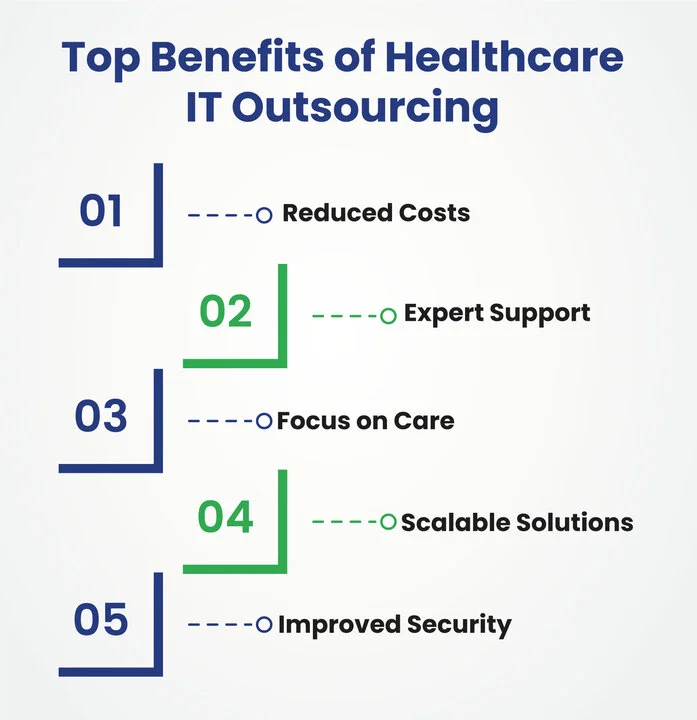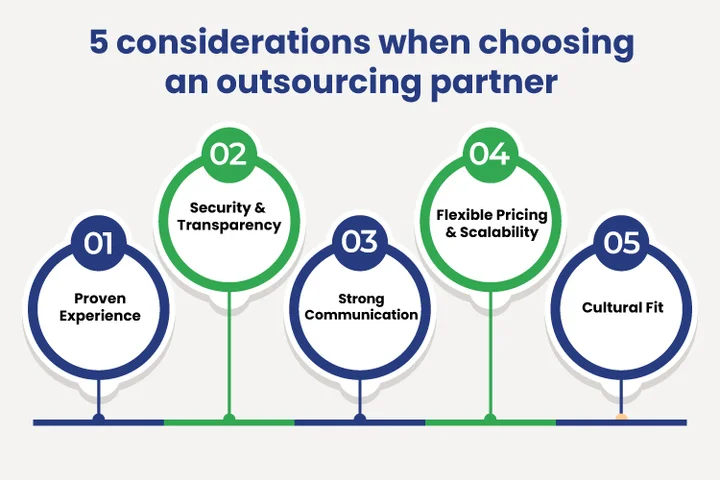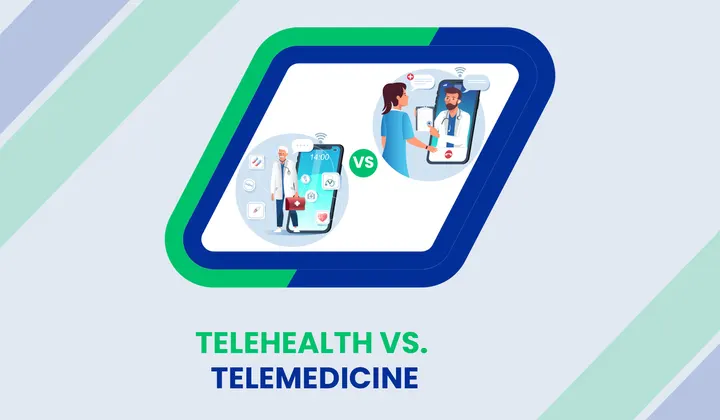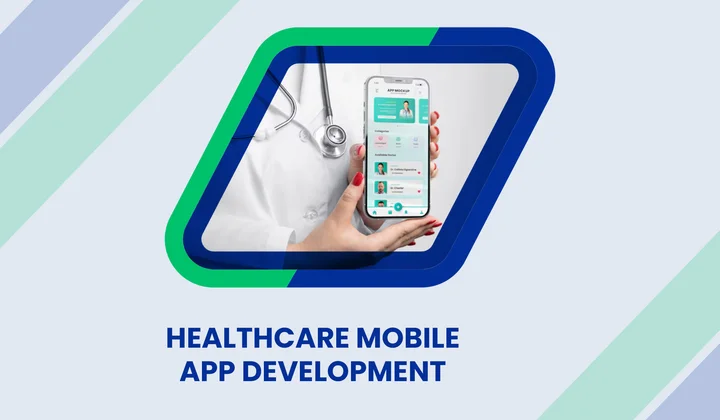Managing IT in healthcare can feel like balancing too many responsibilities at once. Between patient care, data security, software updates, and compliance, it’s easy for teams to feel overwhelmed.
That’s where healthcare IT outsourcing makes a difference.
Hospitals and clinics of all sizes are increasingly choosing outsourcing as a strategic option to achieve cost savings, access specialized skills, and comply with regulations such as HIPAA.
Moreover, beyond cost and compliance, outsourcing supports smoother operations and stronger system performance, helping healthcare organizations stay efficient and agile. In fact, nearly 75% of hospitals with over 300 beds now outsource IT services.
In this blog, we’ll explore the benefits, risks, and important considerations healthcare organizations should keep in mind before taking the outsourcing route.
Think of it as your friendly guide to making informed IT decisions that actually make daily operations easier.
What Is Healthcare IT Outsourcing?
Healthcare IT outsourcing involves partnering with external technology experts to manage key IT functions, including electronic health records (EHRs), cloud infrastructure, software maintenance, and cybersecurity.
This allows hospitals and clinics to maintain secure, efficient systems while healthcare staff focus on delivering better patient care.
Outsourcing IT services in healthcare also strengthens data security, ensures regulatory compliance with standards like HIPAA, and provides access to specialized technical expertise.
Table of Contents
It helps organizations scale smoothly, adopt new technologies faster, and maintain reliable performance without overburdening internal teams.
Overloaded IT teams can slow patient care. See how outsourcing helps you scale smoothly while staying compliant and cost-efficient.
With a solid understanding of what healthcare IT outsourcing entails, let’s explore the significant benefits it offers healthcare organizations.
What Benefits Can Healthcare Organizations Gain from IT Outsourcing?
Imagine your IT operations running smoothly while your staff focuses on delivering quality patient care. That’s what healthcare IT outsourcing helps achieve. Partnering with trusted Healthcare Software Development experts makes everyday work more efficient, secure, and less stressful for teams.
Here are the main benefits of healthcare IT outsourcing and how it supports smarter, safer, and more scalable healthcare delivery:

1. Cost Savings with Healthcare IT Outsourcing
Outsourcing reduces expenses tied to hiring and maintaining large internal IT teams. It also reduces costs related to infrastructure, such as servers, software, and hardware upgrades.The savings can then be redirected toward improving patient services, making operations financially sustainable and efficient.
2. Access to Specialized Expertise in Healthcare IT
Partnering with experienced vendors gives healthcare organizations access to professionals skilled in cybersecurity, compliance, and system management. These experts understand industry-specific needs, helping reduce downtime and technical errors while ensuring compliance with healthcare standards.
3. Better Focus on Patient Care through IT Support
When external experts handle IT management, internal staff can focus more on patient outcomes instead of troubleshooting systems. This improves workflow, reduces interruptions, and increases overall patient satisfaction.
4. Flexibility and Scalability with IT Services in Healthcare
Outsourcing IT services in healthcare allows organizations to scale operations up or down quickly as needed. This adaptability enables healthcare providers to remain flexible and responsive to shifting demands, whether through expanding digital infrastructure or adopting new technologies.
5. Stronger Security and Compliance via Healthcare IT Outsourcing
A reliable vendor ensures strong data protection and compliance, such as HIPAA, through regular monitoring, encryption, and threat prevention.
Many healthcare IT vendors also follow global cybersecurity and cloud standards, such as:
- NIST Cybersecurity Framework: for data protection best practices.
- ISO 27001: for secure information management.
- Microsoft Cloud for Healthcare: built-in compliance and security tools.
- AWS Healthcare Cloud: for HIPAA-ready infrastructure and data protection.
These frameworks help reduce risks and protect patient information.
Now, look at the Healthcare IT Outsourcing risks!
What are the Risks Healthcare Organizations Face with IT Outsourcing?
Outsourcing IT can make hospital operations smoother, but it can also bring challenges that catch organizations off guard. If the proper precautions aren’t taken, there may be security problems, communication breakdowns, or hidden expenses.
Keeping these healthcare IT outsourcing challenges in mind helps healthcare teams plan more effectively and maintain control over their IT systems.
These challenges show why it’s essential to carefully evaluate your healthcare IT vendor before making a decision.

Risk 01: Data Security and Compliance Risks in Healthcare IT Outsourcing
Outsourced systems may experience data breaches, unauthorized access, or failure to comply with HIPAA and other healthcare regulations. Mishandling sensitive patient information can lead to legal penalties and reputational damage.
Solution: Work with vendors that have strong cybersecurity measures and compliance certifications. Regular audits and secure protocols can keep patient data safe.
To further minimize system vulnerabilities, include QA and testing services in your healthcare IT outsourcing strategy to ensure reliability and compliance at every stage.
Risk 02: Loss of Control over IT Systems
Relying on external teams can reduce direct oversight of critical IT infrastructure. Delays in decision-making or a lack of visibility may lead to problems if they arise.
Solution: Maintain regular monitoring, reporting, and clear communication with your healthcare IT vendor to ensure transparency and smooth operations.
Risk 03: Communication and Quality Challenges with IT Services in Healthcare
Misunderstandings, unclear instructions, or delayed vendor responses can disrupt hospital workflows. This can affect staff efficiency and even patient care if problems aren’t addressed quickly.
Solution: Set clear expectations, establish timelines, and maintain consistent communication channels with the vendor to minimize confusion and guarantee quality service.
Risk 04: Hidden Costs and Vendor Reliability Issues
Extra charges, inconsistent service quality, or vendor dependency can impact budgets and daily operations. Unplanned costs or unreliable support can be stressful for healthcare organizations.
Solution: Review contracts carefully and choose vendors with a proven track record and transparent pricing. A reliable partner ensures smoother operations and avoids surprises.
Being aware of these risks and their solutions helps healthcare organizations make informed decisions when choosing healthcare IT outsourcing, ensuring operations remain secure, efficient, and reliable.
What Considerations Should Healthcare Organizations Keep in Mind Before Outsourcing IT Services?
As we see, some risks can appear before outsourcing services. So, outsourcing IT services can bring significant benefits to healthcare organizations, but it’s not a decision to take lightly. Careful planning and evaluation are essential to guarantee the partnership optimizes operations, safeguards patient data, and aligns with organizational goals.
These are some factors to consider before partnering with an external IT vendor:

1. Vendor Expertise and Experience
Not all IT vendors are equally skilled in healthcare. Choosing the right one can save time, prevent errors, and make IT operations smoother.
When evaluating a vendor:
- Look for proven experience with healthcare IT systems, such as EHRs.
- Check their track record with cybersecurity and compliance.
- Ask for client references or case studies.
A knowledgeable vendor ensures your IT runs efficiently, letting your team focus on patient care.
2. Security and Compliance
Data breaches can be costly and harm patient trust.
To protect sensitive information:
- Ensure the vendor complies with HIPAA and other applicable regulations.
- Ask about encryption, access controls, and continuous monitoring.
- Schedule regular audits to check compliance.
Strong security practices give your organization peace of mind and reduce legal risks.
3. Communication and Transparency
Clear communication avoids confusion and keeps workflows smooth. Consider:
- Setting regular reporting schedules with the vendor.
- Defining clear points of contact for IT issues.
- Using collaboration tools to stay aligned on priorities.
Transparent communication helps prevent delays and ensures expectations are met.
4. Cost Structure and Contract Terms
Unexpected costs can impact budgets and operations. Make sure to:
- Review contracts carefully for hidden fees.
- Clarify service-level agreements (SLAs) and deliverables.
- Understand termination clauses and renewal terms.
Transparent pricing and clear agreements prevent surprises and support financial planning.
5. Integration with Internal Teams
Seamless collaboration with in-house staff keeps operations efficient. You need to make sure:
- Vendor workflows complement your internal processes.
- Staff understand their role in interacting with external IT teams.
- Regular meetings or updates maintain alignment.
Smooth integration reduces disruptions and improves overall service quality.
6. Scalability and Flexibility
Healthcare demands change over time. You should check whether the vendor can:
- Scale services up or down based on seasonal or growth needs.
- Support new technologies or system upgrades.
- Adapt to emergencies or sudden IT challenges.
A flexible vendor keeps your organization agile and ready for change.
7. Performance Monitoring and KPIs
Tracking vendor performance ensures accountability. Consider:
- Setting measurable KPIs like system uptime, response time, or compliance metrics.
- Scheduling regular performance reviews.
- Asking for corrective plans if goals aren’t met.
Monitoring performance keeps services reliable and continuously improving.
8. Long-term Strategic Fit
Think beyond immediate needs. Ask:
- Does the vendor align with your organization’s digital transformation goals?
- Can they support future IT strategies or new technologies?
- Do they offer a partnership mindset rather than just a service?
A strong healthcare IT vendor selection process ensures the outsourcing relationship remains beneficial in the long run.
Frequently Asked Questions (FAQs)
2. How Much Does Healthcare IT Outsourcing Really Save?
The cost savings from healthcare IT outsourcing depend on your organization's size and the scope of services you outsource. Typically, hospitals and clinics save on infrastructure, hiring, and maintenance costs. These savings can then be reinvested in patient care and digital innovation. However, reviewing contracts for hidden costs is essential to make sure the partnership remains cost-effective in the long run.
3. How Can We Choose the Right Healthcare IT Vendor?
Selecting the right partner ensures a smooth and secure outsourcing experience. Focus on:
- Proven healthcare experience (EHRs, cloud, compliance)
- HIPAA and security certifications
- Transparent communication and reporting
- Strong client references and SLAs
- Easy integration with internal teams
4. What IT Services Can be Outsourced in Healthcare?
Common IT services that can be outsourced include:
- EHR management
- Cloud infrastructure
- Software maintenance
- Cybersecurity
- Network management
- Technical support
Outsourcing these services helps healthcare organizations focus on patient care while keeping IT systems secure, efficient, and compliant.
Final Takeaway: Making Healthcare IT Outsourcing Work for Your Organization
Outsourcing IT services offers a meaningful path to modernizing healthcare operations. It provided the right partners, safeguards, and strategies. Many organizations outsource to gain access to specialized skills, scale rapidly, and focus on patient care without getting bogged down in the mechanics.
But without careful planning, significant challenges such as data-security lapses, loss of control, or hidden costs can undermine these gains.
So what’s the next step?
Start by pinpointing the exact issue your company is facing, such as sluggish legacy infrastructure, erratic support, or scalability and compliance issues.
Then match that pain point with a solution: a vendor that can integrate with your internal teams, provide transparent communication, and adjust services as your needs evolve.
For example, if scaling cloud infrastructure and supporting secure, compliant operations are critical to your healthcare environment, consider Cloud Engineering services. This kind of service helps you modernize your infrastructure, simplify operations, and align your outsourcing strategy with long-term goals.
Reduce IT spending by up to 30% and keep your healthcare systems fully compliant and high-performing.








Share your thoughts about this blog!